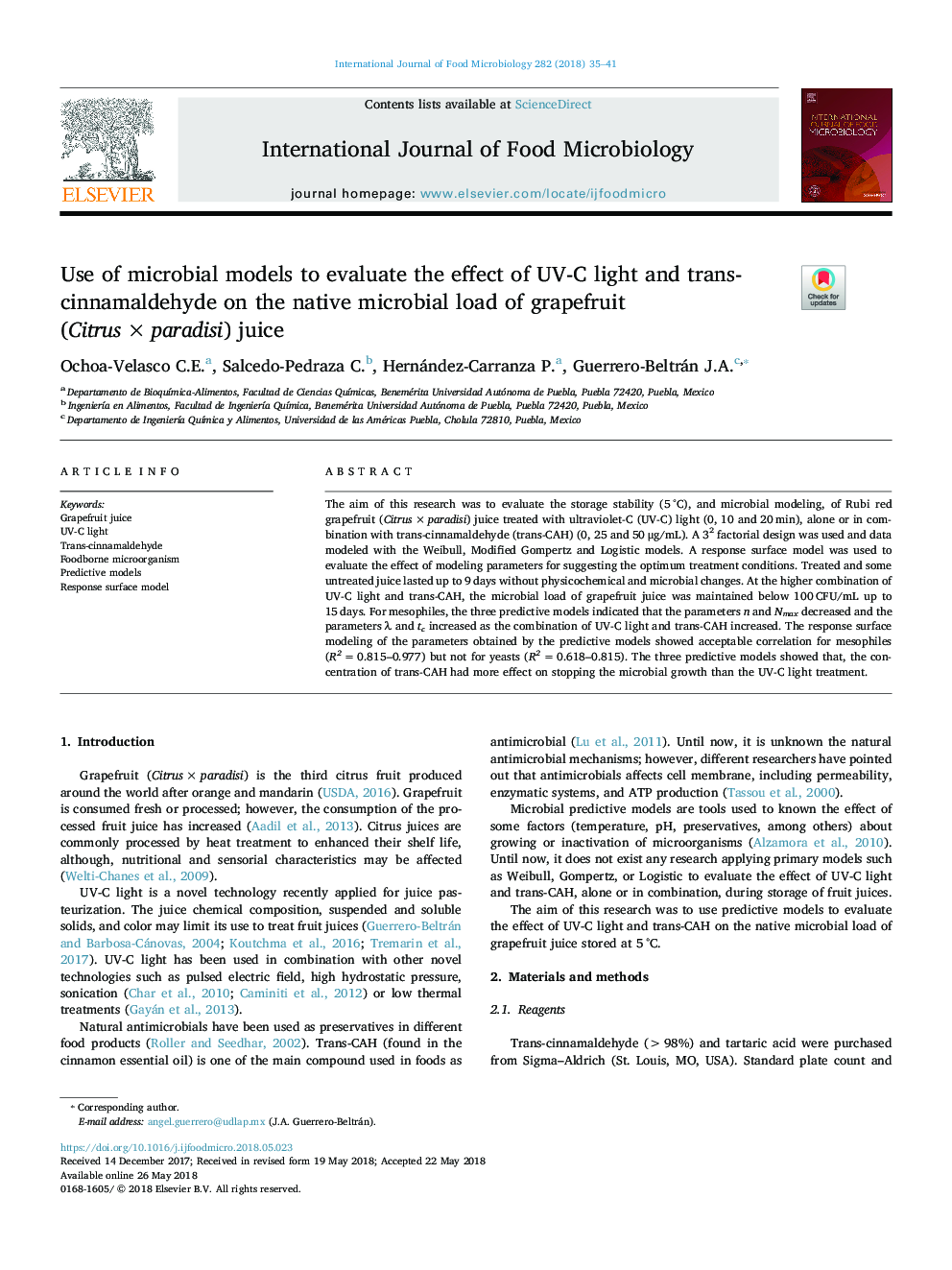| کد مقاله | کد نشریه | سال انتشار | مقاله انگلیسی | نسخه تمام متن |
|---|---|---|---|---|
| 8844114 | 1616501 | 2018 | 7 صفحه PDF | دانلود رایگان |
عنوان انگلیسی مقاله ISI
Use of microbial models to evaluate the effect of UV-C light and trans-cinnamaldehyde on the native microbial load of grapefruit (Citrusâ¯Ãâ¯paradisi) juice
دانلود مقاله + سفارش ترجمه
دانلود مقاله ISI انگلیسی
رایگان برای ایرانیان
کلمات کلیدی
موضوعات مرتبط
علوم زیستی و بیوفناوری
علوم کشاورزی و بیولوژیک
دانش تغذیه
پیش نمایش صفحه اول مقاله

چکیده انگلیسی
The aim of this research was to evaluate the storage stability (5â¯Â°C), and microbial modeling, of Rubi red grapefruit (Citrusâ¯Ãâ¯paradisi) juice treated with ultraviolet-C (UV-C) light (0, 10 and 20â¯min), alone or in combination with trans-cinnamaldehyde (trans-CAH) (0, 25 and 50â¯Î¼g/mL). A 32 factorial design was used and data modeled with the Weibull, Modified Gompertz and Logistic models. A response surface model was used to evaluate the effect of modeling parameters for suggesting the optimum treatment conditions. Treated and some untreated juice lasted up to 9â¯days without physicochemical and microbial changes. At the higher combination of UV-C light and trans-CAH, the microbial load of grapefruit juice was maintained below 100â¯CFU/mL up to 15â¯days. For mesophiles, the three predictive models indicated that the parameters n and Nmax decreased and the parameters λ and tc increased as the combination of UV-C light and trans-CAH increased. The response surface modeling of the parameters obtained by the predictive models showed acceptable correlation for mesophiles (R2â¯=â¯0.815-0.977) but not for yeasts (R2â¯=â¯0.618-0.815). The three predictive models showed that, the concentration of trans-CAH had more effect on stopping the microbial growth than the UV-C light treatment.
ناشر
Database: Elsevier - ScienceDirect (ساینس دایرکت)
Journal: International Journal of Food Microbiology - Volume 282, 3 October 2018, Pages 35-41
Journal: International Journal of Food Microbiology - Volume 282, 3 October 2018, Pages 35-41
نویسندگان
Ochoa-Velasco C.E., Salcedo-Pedraza C., Hernández-Carranza P., Guerrero-Beltrán J.A.,